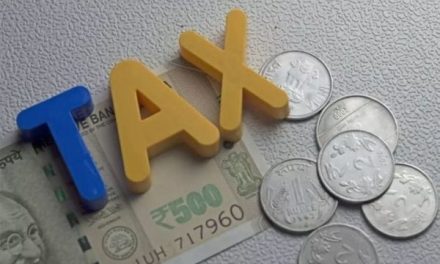When is Budget 2020?
Budget 2020-21 may be presented on February 1, which is a Saturday, and the Economic Survey will be out on January 31. This is probably the first time after 2015-16 when the Budget will be presented on a Saturday. In its first term, the Modi government had decided to advance the date of the Budget from last working day to the first working day, since then the tradition has continued.
The idea behind starting the Budget early in February was to complete the process by March 31, so that expenditure exercise for 12 months could begin on April 1.
Why is the Budget challenging
Nirmala Sitharaman faces one of the toughest balancing acts of her career and the numbers before she is not very encouraging. In the third quarter, the GDP rose 4.5% from a year earlier, about half the pace notched in the first part of 2018. Consumer confidence is at the lowest level since 2014. The labour market, a vital indicator in a country with a population of 1.4 billion, is fragile: The jobless rate has climbed to a 45-year high of 6.1%.
Just last year, India was the world’s fastest-growing major economy. The past decade has been replete with predictions it would take up an increasing share of global commerce, alongside China and America. But the Philippines and Indonesia grew quicker than India last quarter and Malaysia was just a hair behind. China, grappling with its own slowdown, logged a respectable 6% and Vietnam was way ahead at 7.3%.
Sitharaman will be judged for the choice she makes in this Budget. The challenge before her is to restore one of the twin engines of growth– consumption and investment. The mid-course correction in corporate tax rates hardly moved the needle. The interest rate cuts by the RBI haven’t packed much punch.
How do I fit in this Budget
The setback to consumption, especially to rural demand, is a cause for Sitharaman’s concern. Private consumption growth slowed quite sharply in the first half of the current fiscal, hit as it has been by fewer jobs, slower growth in incomes and the lack of easy credit following stress in the non-banking finance sector. As a result, the Indian consumer has pulled back on spending.
Now the easiest fix is to put more money in the hands of the consumer by cutting personal income tax (I-T) in this Budget. The assumption being that this extra money would then be spent on buying goods and/or services, thereby stoking demand that’s currently in the doldrums.
But there is a catch. The risk with such a personal I-T cut, however, is that a jittery consumer may conserve her tax savings and not actually spend, while adversely impacting the government’s spending capacity. A lasting consumer sentiment change could come about if there is a rise in incomes and easier availability of credit. High food inflation in the last few months has raised the prospects of a pick-up in rural incomes, as farmers are getting better prices for their onions, potatoes and other produce.
What has Sitharaman done so far?
Two-and-half-months after presenting her maiden Budget, that was hailed as “development-friendly” and “future-oriented”, Sitharaman in September announced fiscal measures that will cost the government Rs 1.45 lakh crore in revenue annually and may potentially derail the country’s fiscal deficit road map.
The government cut base corporate tax rate for existing companies to 22 per cent from current 30 per cent; and for new manufacturing firms, incorporated after October 1, 2019, and starting operations before March 31, 2023, to 15 per cent from 25 per cent.
Companies in China, South Korea and Indonesia pay 25 per cent tax, while those in Malaysia pay 24 per cent. Only Japan has a higher tax rate than India at 30.6 per cent. Hong Kong has the lowest corporate tax rate of 16.5 per cent while Singapore has a 17 per cent rate and Thailand and Vietnam levy 20 per cent tax on companies. Giving in to the demands of overseas investors, Sitharaman rolled back enhanced surcharge on foreign portfolio investors levied in the Budget in July.
Surcharge on long and short term capital gains arising from the transfer of equity shares was withdrawn.
Following the increase in surcharge in the Budget, the effective income tax rate for individuals with a taxable income of Rs 2-5 crore went up to 39 per cent from 35.88 per cent and for those above Rs 5 crore to 42.7 per cent. To mitigate the genuine difficulties of startups and their investors, it was decided to do away with the so-called ‘angel tax’ for entities registered with the Department for Promotion of Industry and Internal Trade.
Responding to Prime Minister Narendra Modi’s clarion call that wealth creators should not be eyed with suspicion and that they should be respected, the tax department adopted a more friendly approach in its dealings with the tax assessees. In order to address complaints of harassment on account of the issue of notices, summons, orders etc by certain income-tax authorities, it was decided that all these orders shall be issued through a centralized computer system and will contain a computer generated unique Document Identification Number from October 1.











